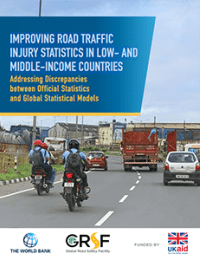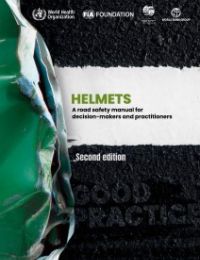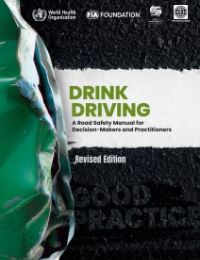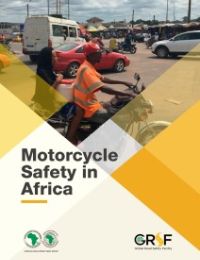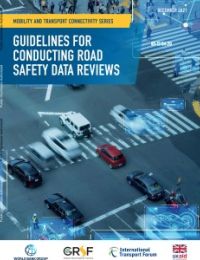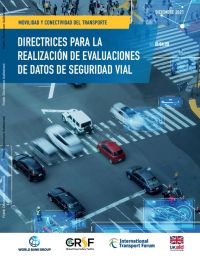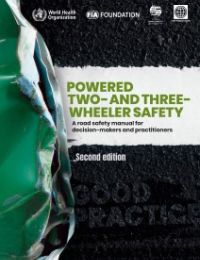Publications
1-10 of 12
-
Road Safety Data
Improving Road Traffic Injury Statistics in Low- and Middle-Income Countries
November 2023
- National decision-makers recognize the issue of underreporting but tend to dismiss higher estimates by global statistical models.
- Most countries use WHO GSRRS estimates.
- National health surveys and censuses in LMICs often contain relevant information, and minor modifications can greatly improve their usage for such measurements.
- Incorporating national health survey data into global statistical models can help resolve discrepancies and increase confidence in estimates.
- Integrating epidemiological data sources into global statistical models (GBD, GHE, GSRRS) to reduce discrepancies and increase confidence in their estimates.
- Including relevant questions in upcoming national data collections to facilitate epidemiological measurements of road traffic injuries.
- Encouraging local involvement in data production for better estimates.
- Enhancing coordination between the Institute for Health Metrics and Evaluation and the World Health Organization to improve estimates and reduce inconsistencies.
-
-
Road Users
Drink-Driving: A Road Safety Manual for Decision-Makers and Practitioners (2nd ed.)
November 2022
-
- international literature and good practices on motorcycle safety;
- assessment of motorcycle crashes, regulations, risk exposure data, risk indicators in African countries (with more detailed analysis of Burkina Faso, Cameroon, Rwanda, and Uganda); and
- consultations with stakeholders.
-
-
Road Safety Data
Directrices Para la Realización de Evaluaciones de Datos de Seguridad Vial (Spanish)
July 2022
-
Road Safety Data
Guide pour la Conduite de Revues de Données de Sécurité Routière (French)
July 2022
-
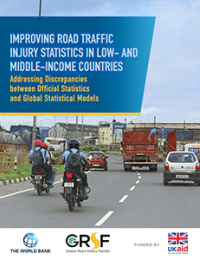
Road safety is a global health and economic issue that disproportionately affects low- and middle-income countries (LMICs). Precise data is crucial for understanding the full scope of the problem and developing effective interventions, but LMICs struggle to collect comprehensive data due to limited resources, underdeveloped health systems, and inconsistent data collection processes.
To overcome reporting gaps, three major global statistical models are utilized: The Institute for Health Metrics and Evaluation Global Burden of Disease (GBD) study, the World Health Organization (WHO) Global Status Reports on Road Safety (GSRRS), and WHO Global Health Estimates (GHE). However, discrepancies exist among these models and between them and official country statistics. They often estimate significantly higher road traffic fatalities and injuries than official LMIC statistics.
This GRSF study identifies the reasons behind statistical discrepancies and outlines strategies to strengthen modeling efforts. This involved qualitative research, a systematic review of national data availability, and four case studies in Brazil, Cambodia, Ethiopia, and Tanzania.
Key findings include:
Recommendations include:
To achieve the goal of the Second United Nations Decade of Action for Road Safety (reducing road traffic fatalities and injuries by 50% by 2030), substantial resources need to be allocated to road safety and accurate reporting and statistical estimates are required.
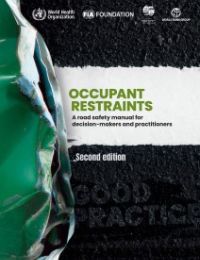
This manual provides guidance and evidence for decision-makers and practitioners that should lead to an increase in the use of vehicle occupant restraints, such as seat-belts for adults and car seats for babies and children. It draws on experience from countries that have succeeded in achieving and sustaining high levels of vehicle occupant restraint use, and builds on new evidence, including from low and middle-income countries.
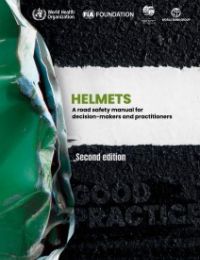
Safe, quality helmets reduce the risk of death in a road crash by over six times, and reduce the risk of brain injury by up to 74%. Head trauma is the leading cause of death for riders, and motorcycles continue to proliferate rapidly. Yet the use of helmets in many low and middle-income countries remains low.
The second edition of the Helmets Manual offers guidance to help decision makers and practitioners put in place the comprehensive set of laws, regulations and actions needed to increase the use of safe, quality helmets to save lives.
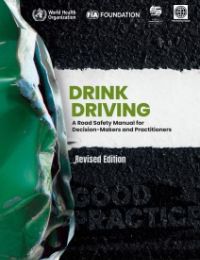
This manual provides guidance for decision-makers and practitioners to reduce the prevalence of drink driving and associated road trauma. It draws on experience from countries that have succeeded in achieving and sustaining reductions in alcohol-related road trauma, and includes recommendations for developing and implementing drink driving legislation, and advice on how to monitor and evaluate progress.

In developing countries with inadequate public transport and road infrastructure, motorcycles present a fast, cheap, and efficient transport alternative. Motorcycles are widely used in many African countries for personal and public transport, as well as for service delivery. In some African countries, motorized two and three-wheelers constitute the largest proportion of the motorized vehicle population. However, despite their benefits, motorcycles expose their riders and passengers to a high risk of serious injury or death in the event of crashes. Motorcycle safety is therefore a significant problem in Africa. On average, 22.5% of road traffic deaths in 2016 involved riders/passengers of two- and three-wheelers, according to the last data published by World Health Organization (WHO, 2018).
This research study presents comprehensive strategic recommendations on how to improve motorcycle safety in Africa. The study will serve as policy advice and technical assistance to the Bank’s regional member countries (RMCs). The study focuses on motorcycle safety conditions in Cameroon, Burkina Faso, Rwanda, and Uganda, where the use of motorcycles for daily activities is reputedly high. Recommendations are predicated on an examination of the major causes of motorcycle crashes and injuries, as well as an extensive body of knowledge from various sources, notably:
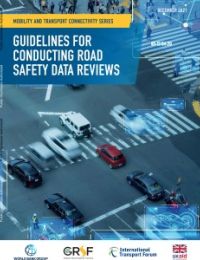
Download the document in English
Download the document in French
Download the document in Spanish
In many countries around the world, deficiencies in data or data quality impair evidence-based road safety policy making. While many countries collect road safety data, the collection is not necessarily comprehensive. Further, many countries can be unaware of data gaps in their system, which prevents them from soundly analyzing their road safety problems. Therefore, road safety data definitions and collection methods must converge into standard international criteria, thus allowing for comparisons in space - across countries - and in time.
This is the raison d’etre of regional road safety observatories, which have been developed, for example, in Latin America (OISEVI), Africa (ARSO), and Asia-Pacific (APRSO). They present an opportunity for joint regional efforts to improve, in a harmonized way, road safety data collection and analysis. Regional road safety observatories promote the adoption of a common set of road safety indicators based on common definitions and serve as an avenue to assist countries in improving the management of their crash data systems.
This document is designed to support reviewers in the assessment of road safety data collection; the complete range of safety data should be considered. This task can be complicated because collection of road safety data is often not achieved by activities dedicated to this purpose, but rather through piggybacks on other sources. For example, activity reports from police or hospitals are used to provide material for legal or medical purposes. The routines involved frequently have a long history in which gathering reliable and complete statistics has had secondary priority, at best. The various actors involved reflect the complex structure of a country’s judicial and executive system, which, generally, are not coordinated. Consequently, any review of the data collection process requires some “detective work.”
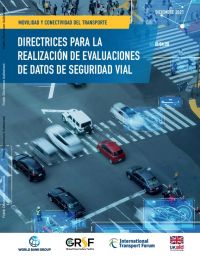
En muchos países del mundo, las deficiencias en los datos o en la calidad de los mismos perjudican la formulación de políticas de seguridad vial basadas en evidencias. Si bien muchos países recopilan datos de seguridad vial, la recopilación no es necesariamente exhaustiva. Además, muchos países pueden desconocer las lagunas de datos en su sistema, lo que les impide analizar de manera sólida sus problemas de seguridad vial. Por lo tanto, las definiciones de datos de seguridad vial y los métodos de recopilación deben converger en criterios internacionales estándar, lo que permite realizar comparaciones en el espacio (entre países) y en el tiempo.
Esta es la razón de ser de los observatorios regionales de seguridad vial, que se han desarrollado, por ejemplo, en América Latina (OISEVI), África (ARSO) y Asia-Pacífico (APRSO). Presentan una oportunidad para realizar esfuerzos regionales conjuntos para mejorar, de manera armonizada, la recopilación y el análisis de datos de seguridad vial. Los observatorios regionales de seguridad vial promueven la adopción de un conjunto común de indicadores de seguridad vial basados en definiciones comunes y sirven como una vía para ayudar a los países a mejorar la gestión de sus sistemas de datos de accidentes.
Este documento está diseñado para ayudar a los revisores en la evaluación de la recopilación de datos de seguridad vial; Se debe tener en cuenta la gama completa de datos de seguridad. Esta tarea puede ser complicada porque la recopilación de datos de seguridad vial a menudo no se logra mediante actividades dedicadas a este fin, sino más bien mediante la combinación de otras fuentes. Por ejemplo, los informes de actividades de la policía o de los hospitales se utilizan para proporcionar material para fines legales o médicos. Las rutinas involucradas con frecuencia tienen una larga historia en la que la recopilación de estadísticas confiables y completas ha tenido una prioridad secundaria, en el mejor de los casos. Los diversos actores involucrados reflejan la compleja estructura del sistema judicial y ejecutivo de un país, que, por lo general, no están coordinados. En consecuencia, cualquier revisión del proceso de recopilación de datos requiere un cierto “trabajo de detective”.

Dans de nombreux pays du monde, les lacunes en matière de données ou de qualité des données compromettent l’élaboration de politiques de sécurité routière fondées sur des données probantes. Si de nombreux pays collectent des données sur la sécurité routière, la collecte n’est pas nécessairement exhaustive. En outre, de nombreux pays peuvent ne pas être conscients des lacunes de données dans leur système, ce qui les empêche d’analyser correctement leurs problèmes de sécurité routière. Par conséquent, les définitions et les méthodes de collecte des données sur la sécurité routière doivent converger vers des critères internationaux standard, permettant ainsi des comparaisons dans l’espace (entre les pays) et dans le temps.
C’est la raison d’être des observatoires régionaux de la sécurité routière, qui ont été développés, par exemple, en Amérique latine (OISEVI), en Afrique (ARSO) et en Asie-Pacifique (APRSO). Ils offrent l’occasion de déployer des efforts régionaux conjoints pour améliorer, de manière harmonisée, la collecte et l’analyse des données sur la sécurité routière. Les observatoires régionaux de la sécurité routière favorisent l’adoption d’un ensemble commun d’indicateurs de sécurité routière basés sur des définitions communes et servent de moyen d’aider les pays à améliorer la gestion de leurs systèmes de données sur les accidents.
Ce document est conçu pour aider les examinateurs à évaluer la collecte de données sur la sécurité routière ; Il convient de prendre en compte l’ensemble des données de sécurité. Cette tâche peut s’avérer compliquée, car la collecte de données sur la sécurité routière ne se fait souvent pas par le biais d’activités dédiées à cet effet, mais plutôt par le biais d’autres sources. Par exemple, les rapports d’activité de la police ou des hôpitaux sont utilisés pour fournir des informations à des fins juridiques ou médicales. Les routines concernées ont souvent une longue histoire dans laquelle la collecte de statistiques fiables et complètes a été, au mieux, une priorité secondaire. Les différents acteurs impliqués reflètent la structure complexe du système judiciaire et exécutif d’un pays, qui, en général, ne sont pas coordonnés. Par conséquent, tout examen du processus de collecte de données nécessite un « travail de détective ».
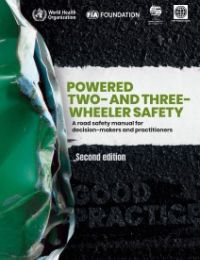
Nearly 30% of all road traffic deaths reported to WHO involve powered two- and three-wheeled vehicles, such as motorcycles, mopeds, scooters and electrical bikes (e-bikes). As these vehicles become increasingly widespread, particularly in low-and middle-income countries, the proportion of deaths involving them is increasing.
The second edition of the Powered- Two and Three-Wheeler Safety Manual offers guidance to help decision makers and practitioners put in place the comprehensive set of laws, regulations and actions needed to save lives. Rooted in new case studies and evidence, including from low- and middle-income countries, it includes guidelines on developing safer roads, ensuring safer mobility for all road users, vehicle safety standards, and actions to improve emergency responses to crashes.
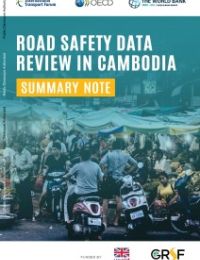
Road safety is a major public health issue in Cambodia. Reducing the number of road crashes is a priority for the government. Accurate data are needed to design the most effective interventions. Improving the current crash data system will furnish a more comprehensive picture of critical road safety issues in Cambodia and provide the basis for developing policies to save more lives.
In the framework of the development of the Asia Pacific Road Safety Observatory (APRSO), the World Bank and the International Transport Forum (ITF), with the support of the Cambodian Government, initiated a project aimed at assessing the crash data system in Cambodia and developing a road map for strengthening this system.
This project follows up on a previous twinning project between Cambodia and the Netherlands, undertaken in the framework of the International Road Traffic and Accident Database (IRTAD) group of ITF in 2010-2014. That project concerned both a review of the Road Crash and Victim Information System (RCVIS), and training and support to develop a national road safety strategy and related indicators.
The current project started in 2019 and was carried out by the World Bank and the ITF, with support from the Global Road Safety Facility (GRSF) and UK AID. The Dutch Road Safety Research Institute, SWOV, was contracted by the ITF to lead the review.
This report provides conclusions and recommendations on the basis of the data review mission undertaken in December 2019.

